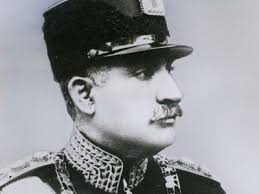In September 2000 I made two trips to Europe to attend several business meetings. Both trips took me to Paris, first for three days, then for two. Because of where I stayed and my schedule, the rides were very different.
On the first trip, I had meetings only on the west side of Paris so I picked a hotel between the meeting site and the best place in Paris for bicyclists: L’Hippodrome: the horse-racing track next to the River Seine on the southwest corner of Paris in the huge park called Bois de Boulogne. There is a two-mile road around horse track that is closed every day, year-round from 10 am to dark for bicyclists. The road varies from one to three lanes wide and actually has about fifty feet of elevation change—uphill on the east side, downhill on the west. Every day, local cyclists circle this loop in groups varying in speed from casual commuters taking a lap, to groups of fifty or more averaging 25 to 27 mph.
The fast group is local racers from teenagers to 50+, but as in America, more old guys than young. These guys ride very orderly pace lines when the groups are smaller than 20. Bigger groups tend to have three or four guys up front doing about 90% of the pulls. Once in a great while, in the off season, a current or recent Tour de France rider who lives in Paris will drop in on the ride and take the pack to some painful speed above 30 mph. I always ride American-flag jerseys or my team kit. Parisian bike racers are as friendly as American Cat. 1,2,3 racers so no one talks to you anyway, but with the American-flag stuff on, they know I can’t speak French—especially at 27 mph. Most bike racers in Paris are blue-collar guys who don’t speak English, so the ride is not a social event for Americans.
But it is a great ride—no square turns, and just about any pace you could want will have a group you can ride with. I was in Paris three days in early September and managed to ride four times. My hotel was in Suresnes, just across the river from the training ride and half the price of a Paris hotel just because it is outside the city. From my hotel, I rode down through the center of town, crossed the Suresnes bridge and turned right at the second road to get to the ride site.
On my second trip to Europe in September, I spent two days in Paris and did not ride in the training race. In fact, I stayed in a hotel near the airport 12 miles northeast of Paris. One of the days, I had a meeting in the center of Paris and one in a suburb just south of the city. I rode from the airport to the city center then to the south side and back. The road to the city is a 4-lane highway. It was like riding from Paoli to Philadelphia on Route 30—EXCEPT, no one screwed with me at all. It was flat and dull but not dangerous. At the city line at the town of Porte de Villette, the way into the city was through a cobblestone traffic circle with 6 intersecting roads and a railroad overpass. Once through the circle, I rode straight across Paris splitting lanes with the scooters and couriers and having a great time. Again, lots of traffic but no Neanderthals in SUVs trying to kill you. On the second day, I took a ride through the suburbs of Paris near the airport.
Of course, the best place to ride in Paris is the training race but riding in the city is great if for no other reason than experiencing heavy traffic without the small-minded people with big engines that we put up with on nearly every ride.










